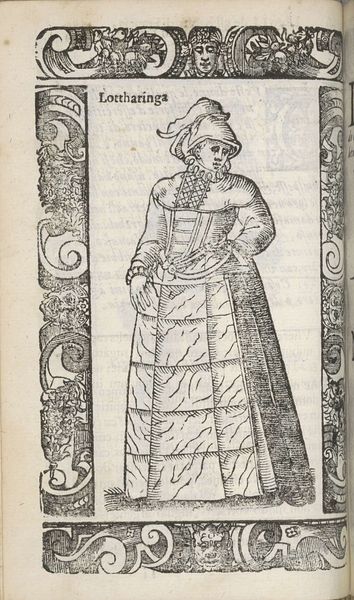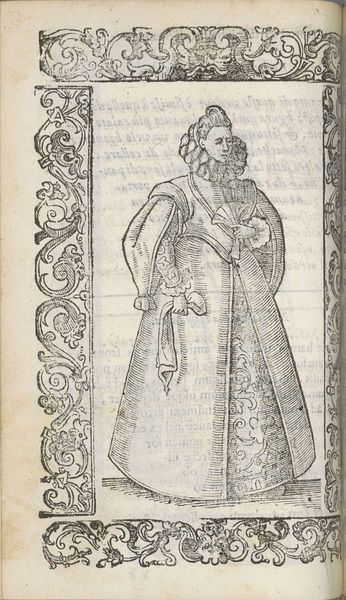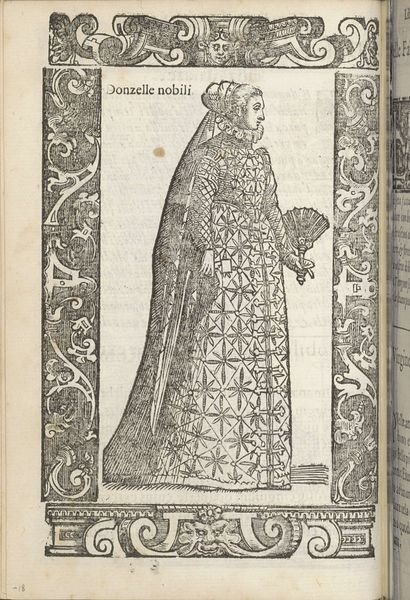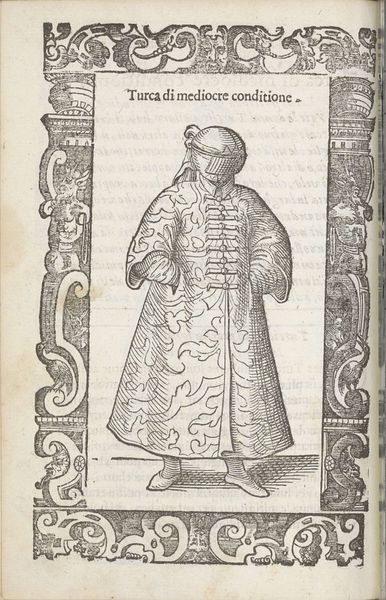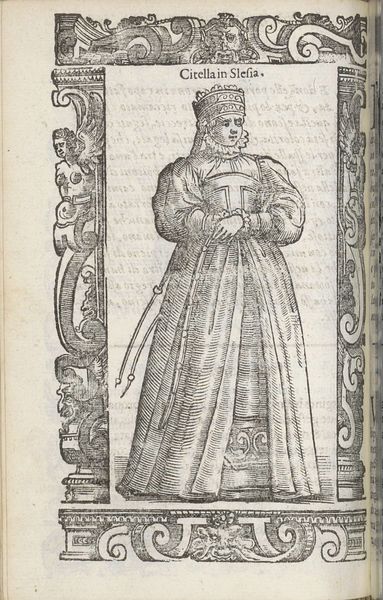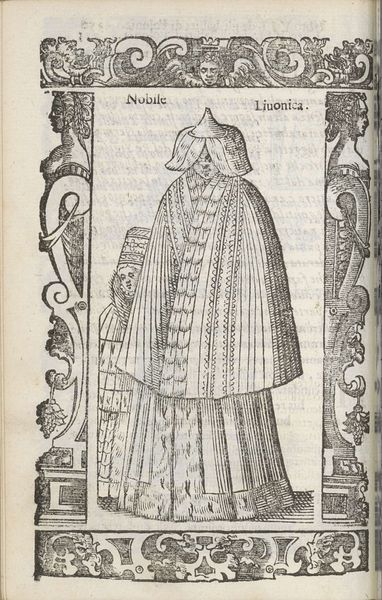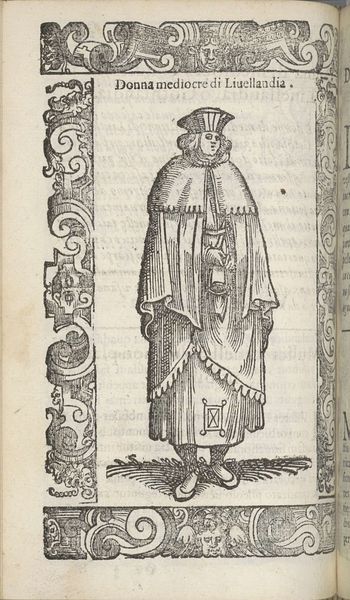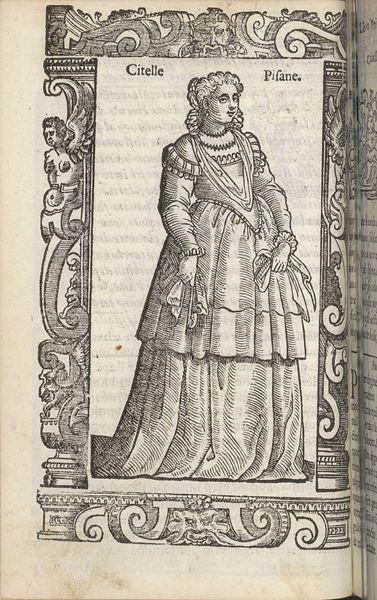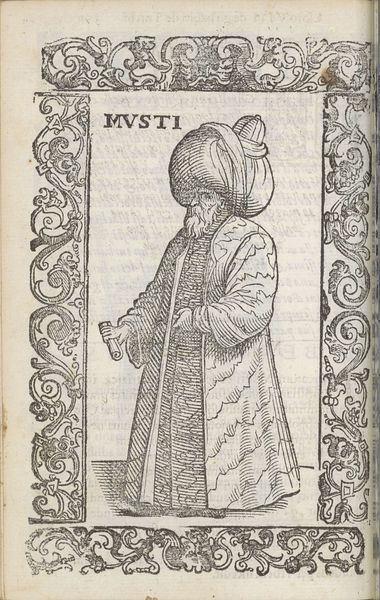
print, engraving
#
portrait
#
medieval
# print
#
figuration
#
line
#
genre-painting
#
northern-renaissance
#
engraving
Dimensions: height 167 mm, width 125 mm
Copyright: Rijks Museum: Open Domain
Editor: This is Christoph Krieger’s "Donna mediocre," an engraving from 1598. There's a figure of a woman, with a child. It’s interesting the figures are labelled “Donna mediocre." What's your read on it? Curator: That title is crucial, isn't it? Krieger’s choice immediately situates this piece within a critique of social hierarchy and the perceived roles of women during the late 16th century. “Donna mediocre,” a middling woman. Do you see this as a portrait of an individual? Editor: Hmm, maybe not an individual so much as a type? Curator: Exactly. The starkness of the line engraving flattens affect and focuses attention on the accoutrements of status. This could be seen as a commentary on the expectations placed upon women of a certain class, where outward appearance and adherence to social norms were paramount. Consider, also, how the clothing of the figures visually establishes their respective roles and highlights societal structures in the Medieval period. Editor: So the image, seemingly straightforward, becomes a critical observation. I hadn’t considered it as commentary, but more as an observation of types of the period. The ornate border contrasts a little with what you say: it lends it prestige rather than criticism. Curator: But consider if that's also strategic. Is the artifice of that border itself part of what's being critiqued? Think about how often those borders appear on works which idealize royalty, the church, or prominent wealthy families. The meaning and power lies in those fine details. Krieger makes clear her “mediocrity.” So, while seemingly dignified, that framework adds another layer of irony. Editor: I hadn't thought of the border like that, but that reading of context makes so much sense! Thank you for broadening my perception. Curator: And thank you, for the opportunity to consider such subtle nuances.
Comments
No comments
Be the first to comment and join the conversation on the ultimate creative platform.

